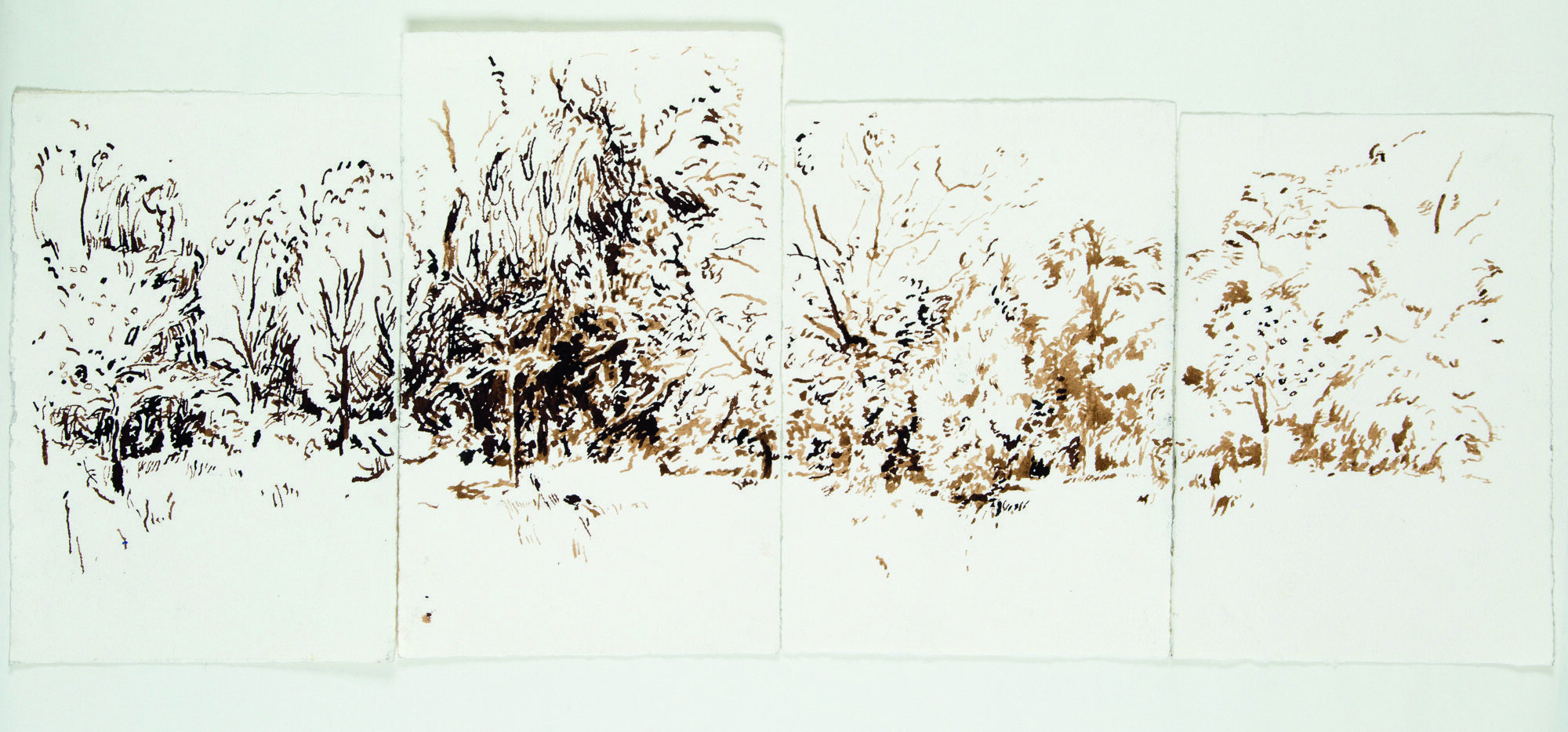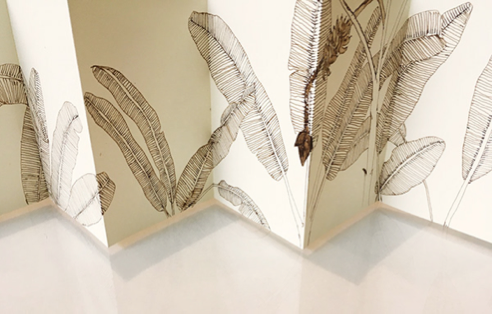Drawing paradise Drawing exercise


Where
Depending on your individual circumstances, this exercise invites you to move around the space, your space, to observe the plants or trees inside or outside. Later in the day you may remember and imagine the forms.
Materials
Moleskine offers two sizes of a 'Japanese Notebook,' which I recommend for this exercise. Alternatively, you can create your own by preparing a long strip of paper (potentially taped together in two lengths) with dimensions of approximately 9cm x 14cm. The Moleskine contains 60 folds, but the number is up to you. The paper doesn’t have to be white.
For drawing, either tonal or line work, ink (black or sepia) is ideal. Walnut ink is even better if you have it. You can also use tones of a single colour, such as watercolour or coloured pencil. Otherwise, watercolours, gouache, and inks are all suitable.
 Cheri Smith
Cheri Smith
'BP Trees', 2018
Once you’ve observed the natural forms around you, allow them to influence your sensibilities. Hold onto these feelings as you draw the plants, trees, and the space they inhabit. As the light changes throughout the day, your emotions will shift as well.
Remember, while everything you care about feels permanent to you, the world is always in a state of flux. It’s no surprise that we want to capture the essence of what we see. To truly express this essence, it must come from within.
Using the accordion notebook you’ve created, make a new drawing on each page or in each square, much like a couplet in a poem. The power of sequential drawing lies in its flow, as it helps you find unity. This flow will create a rhythm in your design, revealing the natural patterns and rhythms that exist in everything.
As Hsieh Ho, a 5th-century Chinese scholar, said: 'Of all the qualities a good drawing must have, the most important is depth of feeling, with rhythm in all living things.'
Featured artwork: Tyga Helme, 'Untitled', 2014